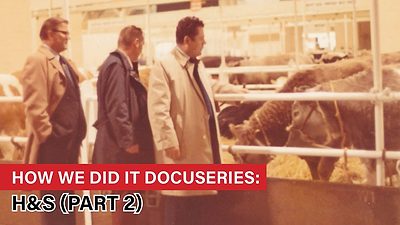HANOVER, Germany — The trend towards further automation of processes — coupled with intelligent data management systems to optimize the regulation and control of equipment, logistics, documentation, quality assurance and traceability — is proceeding in agriculture. This is demonstrated by the more than 320 new product registrations the DLG (German Agricultural Society) has received for this year's Agritechnica.
Cloud Computing and Big Data have gained industry relevance, and in addition to 4.0, the digitization and networking of the value chain in agriculture is becoming important. With that considered, a Gold Innovation Award at Agritechnica 2017 goes to the first fully automatic tangential threshing system that uses sensors to adjust itself to suit crop conditions and achieve optimum results.
Classic engineering, however, continues to result in products with benefits for the entire agricultural sector, and this year’s second Gold Innovation Award goes to a maize header with an integrated stubble mulcher. This development helps control the corn borer, a significant pest affecting maize crops, and results in an overall reduction in the use of pesticides.
Elsewhere in the awards is a trend towards adapting solutions from other industries into agriculture. Examples include Silver Innovation Awards for e-mobility, a height-adjustable operator’s cab, intelligent networked vehicles and augmented reality applications.
Among the other targets that received recognition from the DLG Innovations Jury were new ways of making operators’ jobs easier. There has been a continuing reduction in long hours of monotonous, and complex work for operators, and these tasks will eventually be taken over new technologies.
Overall, the DLG Innovations Jury has recognized two innovations with the Agritechnica Gold Innovation Award 2017, and 29 innovations with the Agritechnica Silver Innovation Award 2017.
Gold Agritechnica Innovation Awards 2017
- CEMOS AUTO THRESHING — the autonomous threshing system for CLAAS straw-walker and hybrid combine harvesters
Claas-Vertriebsgesellschaft mbH, Germany — Hall 13, Stand C02
Currently operators have to find out by themselves which settings strike the best balance between the optimum drum speed, the optimum concave gap, the suitable aggressiveness of threshing and the quality of the grain. Some operators find this complexity too difficult to come to terms with, and find setting up the combine a chore. Consequently, very often a combine is not set up perfectly to suit the current harvest conditions.
Cemos Auto Threshing sets the tangential threshing system on straw walker and hybrid machines automatically. As such, it aims to optimize the quality of work and performance. Depending on the strategy entered into the system by the operator, it sets the drum speed and the concave gap for optimum results in the current harvest conditions. Another feature is that all controllers communicate with each other. For example, the throughput controller operates via a special communication module to control the throughput relative to the threshing controller, as well as the separation and cleaning controllers.
Another module in the system is auto threshing, which completes the step to implement fully automated threshing. On such a harvester, users no longer need to know which settings they have to make to get the desired results. Instead, they enter the harvesting strategy, which is then used by the auto-learning system to set parameters.
StalkBuster
- Kemper Maschinenfabrik GmbH & Co. KG — Hall 13, Stand C31
Developed jointly with:
John Deere GmbH & Co. KG — Hall 13, Stand E30
Aimed to control the corn borer pest, the Kemper StalkBuster iimplementsstubble-destroying technology that forms an integral part of a maize header. The machine destroys all the stubble before it is driven on by the forager or the tractor and trailer. Usually about 30% of the stubble remains intact, and as the corn borer winters inside it, a high percentage of undestroyed stubble offers them a haven so they can infest the area again the following year. The corn borer pupates in the stubble in spring and the moth starts infesting the new crop after that. The topper is integrated in the header, is relatively lightweight and has a relatively low power input requirement. This means no extra limitations apply for legal road transport.
View the entire release with the winners of the Silver Agritechnica Innovation Awards here.






Post a comment
Report Abusive Comment